Locals Clash Over Arrow Linen Site's Future at Raucous Community Hearing
More than 400 people turned out to the first Community Board 7 meeting on the Arrow Linen rezoning on Monday night.

More than 400 people turned out for a meeting on the proposed Arrow Linen rezoning Monday night. Photo by Anna Bradley-Smith
It was standing room only, and barely any of that, at a heated two and a half hour public hearing on the Arrow Linen rezoning application in South Slope held by Community Board 7 Monday night, where 29 residents had the chance to speak to the crowd and many others expressed their views through roaring boos, cheers, signs, and heckles.
More than 400 people turned out for the hearing on the contentious proposal to build two 13- to 19-story apartment towers at the Arrow Linen commercial laundry site at 467 Prospect Avenue. Many made their views clear by holding one of two opposing signs: “Housing Not Highrises” for those against the application and “Build More Homes” for those supporting it.
It was an unusually big crowd for a spot rezoning. At stake is whether a developer will be allowed to waive existing rules to put up two mostly market-rate luxury towers four to five times taller than existing row houses, or build a three-story apartment complex as of right or, as a local group and an affordable housing developer have proposed, create a fully affordable development with a greater number of units that will be more than double the height of existing homes at six to nine stories. Any of those outcomes could potentially set a precedent for development in the general area.
Speakers were almost evenly split over the proposal: 15 spoke against the rezoning application and 13 spoke in support. One didn’t explicitly state whether he is for or against it, but said he supports housing at the site. Local Council Member Shahana Hanif and New York State Assembly Member Robert Carroll also spoke at the meeting.
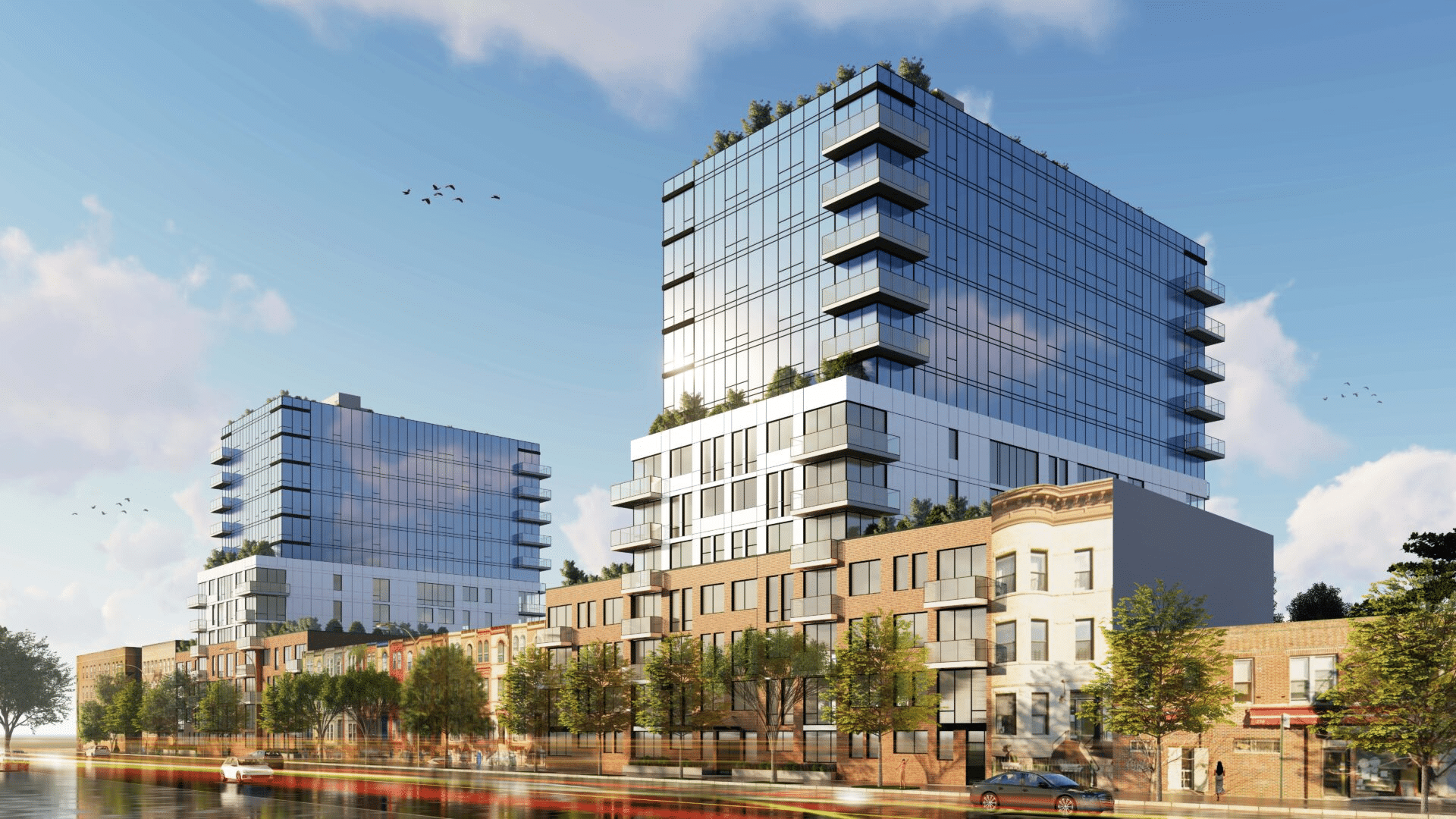
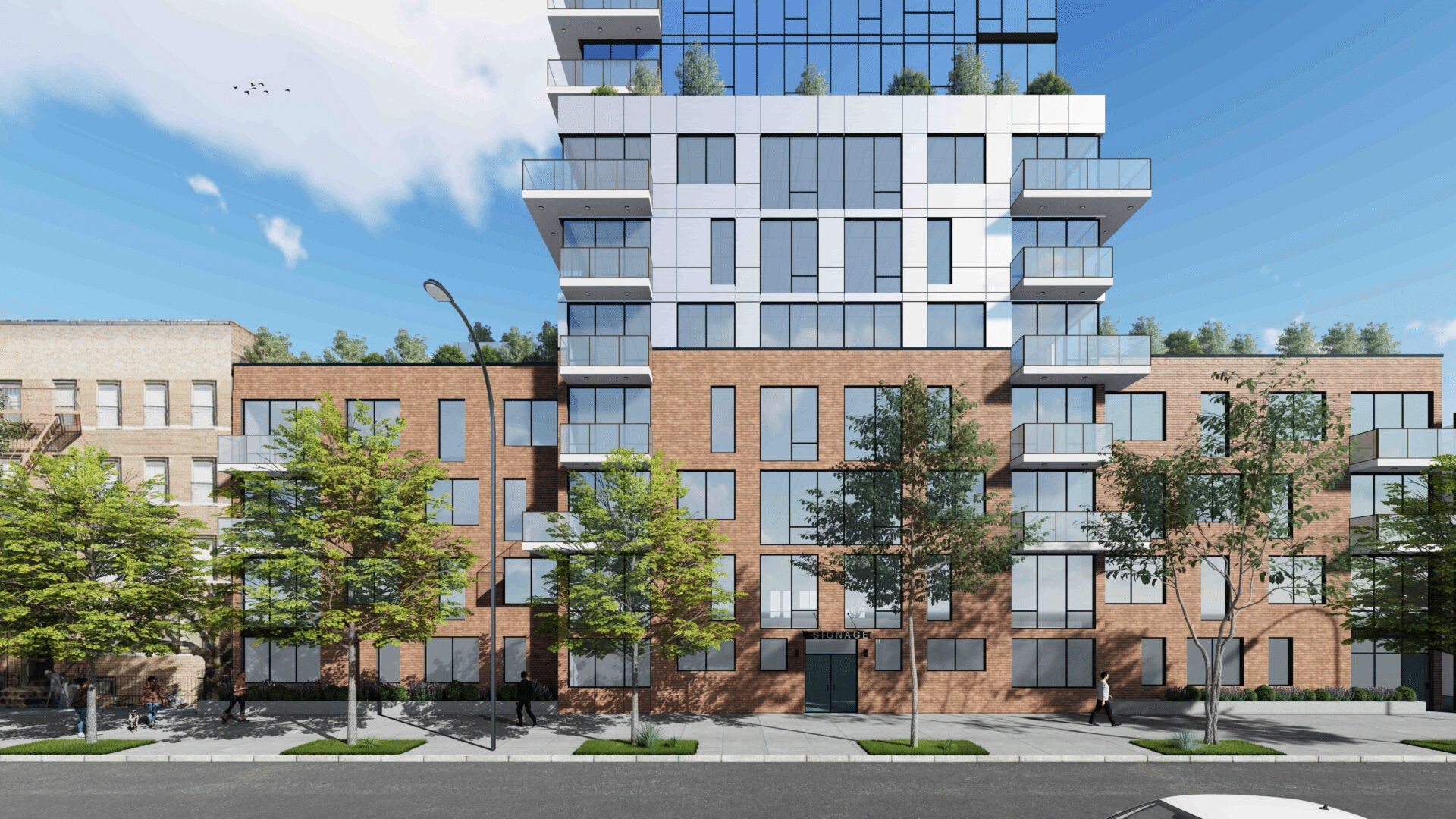
Hanif, who plays an important role in the proposal’s future, said she won’t take a stance until public feedback is over, but did make clear she wants deeper affordability than the minimum required by a rezoning. Meanwhile Carroll, who represents the district and said he was born and raised there, vehemently opposes the rezoning and supports the shorter, 100 percent affordable development.
“Community members have identified one affordable housing group, Catholic Charities, but I know that there are multiple affordable housing developers that would love to develop at the Arrow Linen site,” Carroll said. He said a seven- to nine-story development with 250 units of permanently affordable housing “much more seamlessly fits into the character of our neighborhood.”
He added that as proposed the rezoning risks creating a domino effect on nearby neighborhoods with large working class and immigrant communities. “My hope is that the city will partner with the community, rather than forcing through a rezoning that would set a precedent leading to real estate speculation of more luxury developments, and a potential chain of reaction,” he said.
He added the proposed developer, Apex Development Group, has no experience in residential development, let alone in industrial waste remediation such as what the Arrow Linen site would require after operating as a commercial laundromat for more than 100 years.
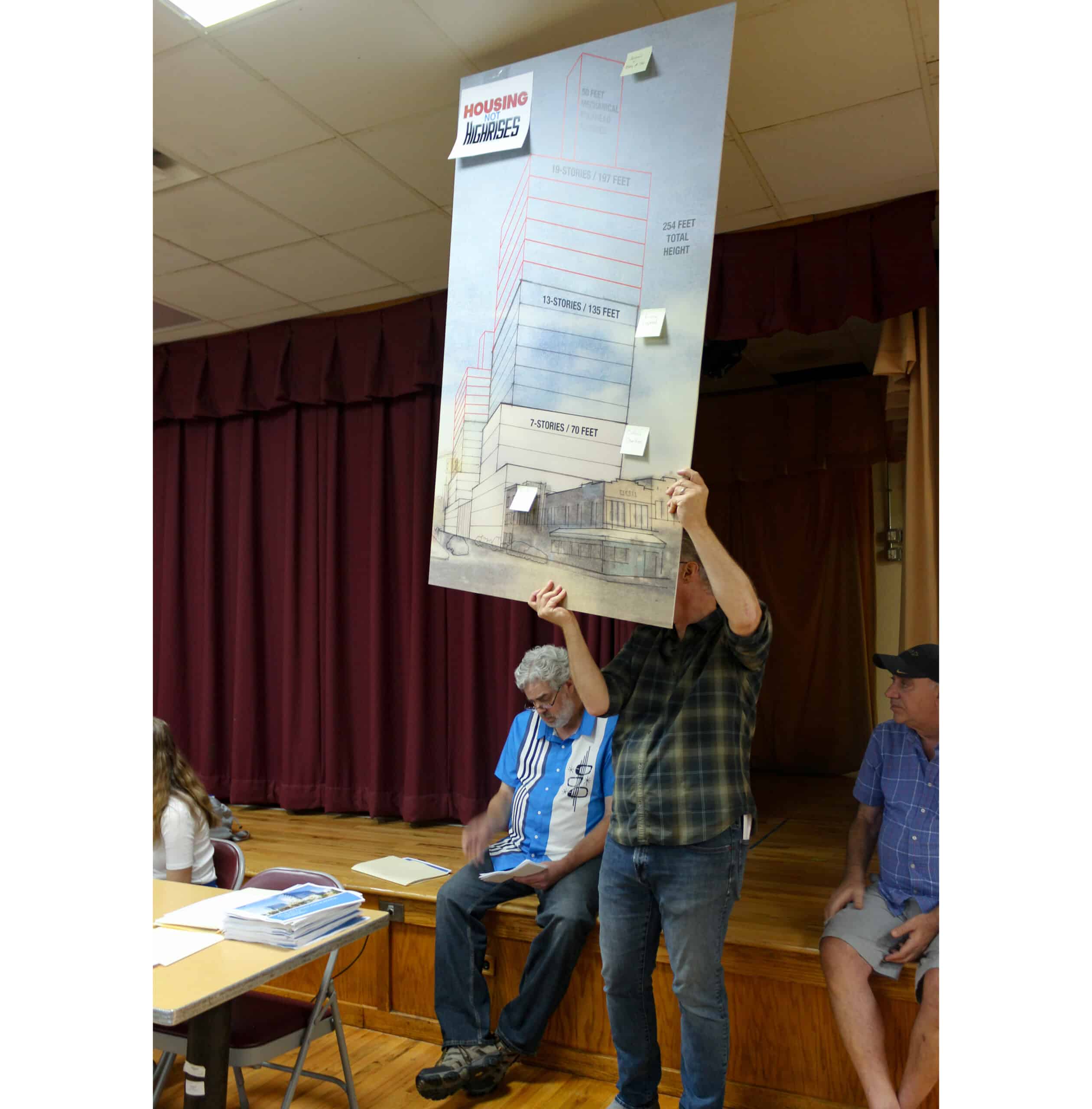
The meeting came weeks after Housing Not Highrises said they had connected with an affordable housing developer who is interested in purchasing the site and building a seven- to nine-story, 100 percent deeply affordable development on the site. The group also last week filed a lawsuit against the city asking to delay the land use review process, known as ULURP, until after the mayor’s proposed City of Yes zoning changes have been decided, because they could allow for a substantially larger development.
Early on in the meeting, a rep from the community board read a statement from Catholic Charities Progress of Peoples Development Corporation that said the group had been approached by Housing Not Highrises asking if it could build “a financeable, 100 percent affordable development” on the Arrow Linen site, similar to its nearby seven-story Bishop Boardman senior affordable development at 1615 8th Avenue. The nonprofit said it could do so with an R6A zoning designation (which would also require a rezoning) and said it was willing to discuss a sale with the owner of the site.
“On June 5, CCPOP reached out to representatives of the Arrow Linen site. At this meeting, CCPOP asked Arrow Linen representatives if there was an interest in selling the site. CCPOP was informed that the property owners were not interested in selling and therefore did not present an offer to purchase,” the statement said. “All information has been communicated, and CCPOP has no further involvement in this property. CCPOP appreciates the opportunity to clarify our involvement with this site, and would like to thank all parties for their support of our mission.”
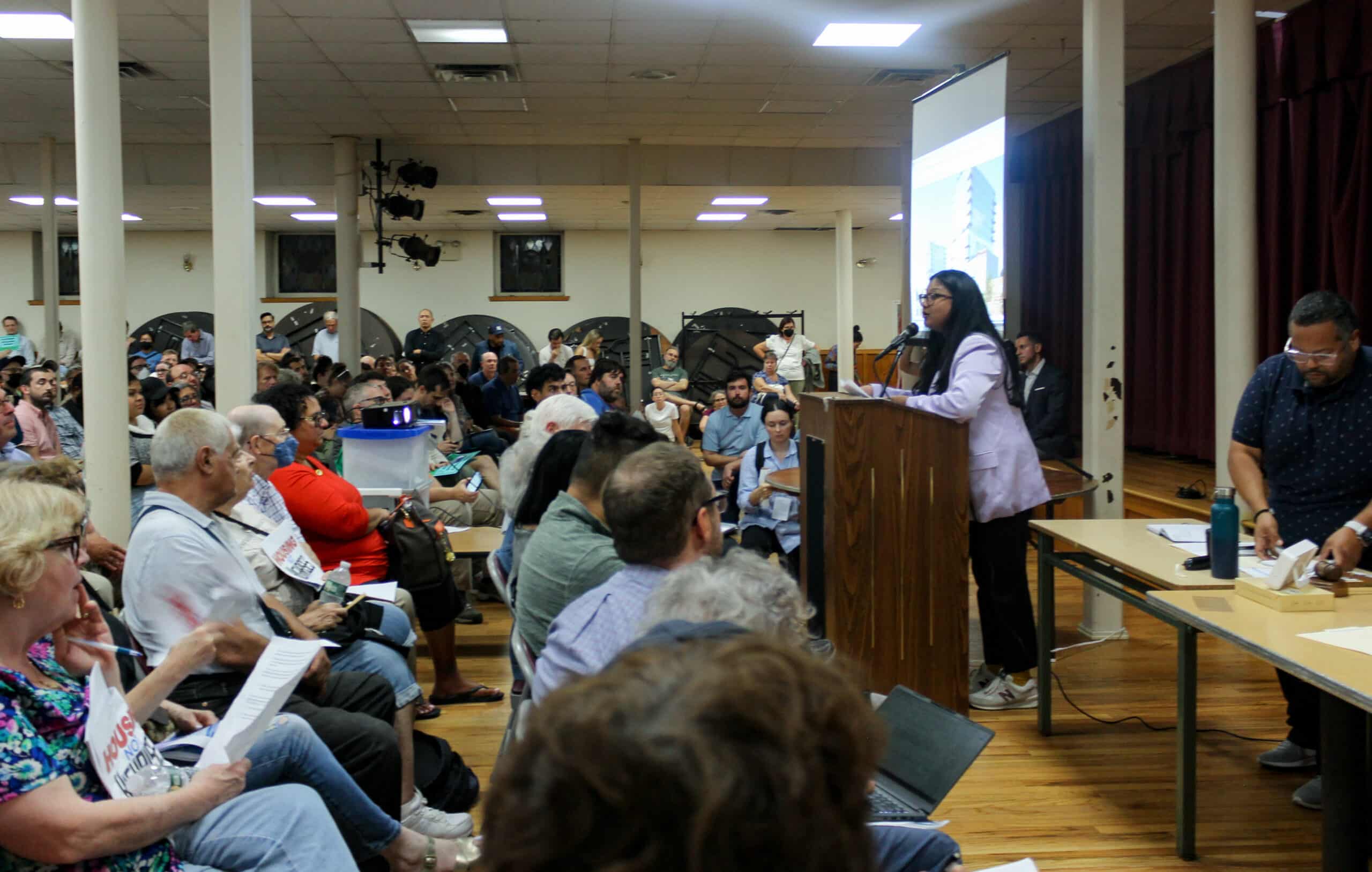
While the lobbyist for Arrow Linen Michael Woloz, representatives for its legal team, and Andrew Esposito of Apex Development were at the meeting, the owners of Arrow Linen did not attend. The representative from the legal team presented the proposal, saying the rezoning would facilitate the development of two 13-story buildings with 244 apartments.
Included would be 34 studios, 56 one-bedrooms, 114 two-bedrooms, and 40 three-bedrooms. Because of the rezoning, the development would have to include 25 percent to 30 percent affordable housing at either an average of 60 percent or 80 percent of Area Median Income.
The rep said the development team would go for the 25 percent option at the 60 percent AMI average, and would include 24 apartments for households at 40 percent AMI, 24 for households at 60 percent AMI, and 13 for households at 80 percent AMI. At current rates, that would include studios for between $1,013 and $2,100, one-bedrooms for between $1,081 and $2,246, two-bedrooms for between $1,289 and $2,687, and three-bedrooms for between $1,481 and $3,096. AMI will almost certainly increase by the time the development is complete, meaning the price of the rentals will too.
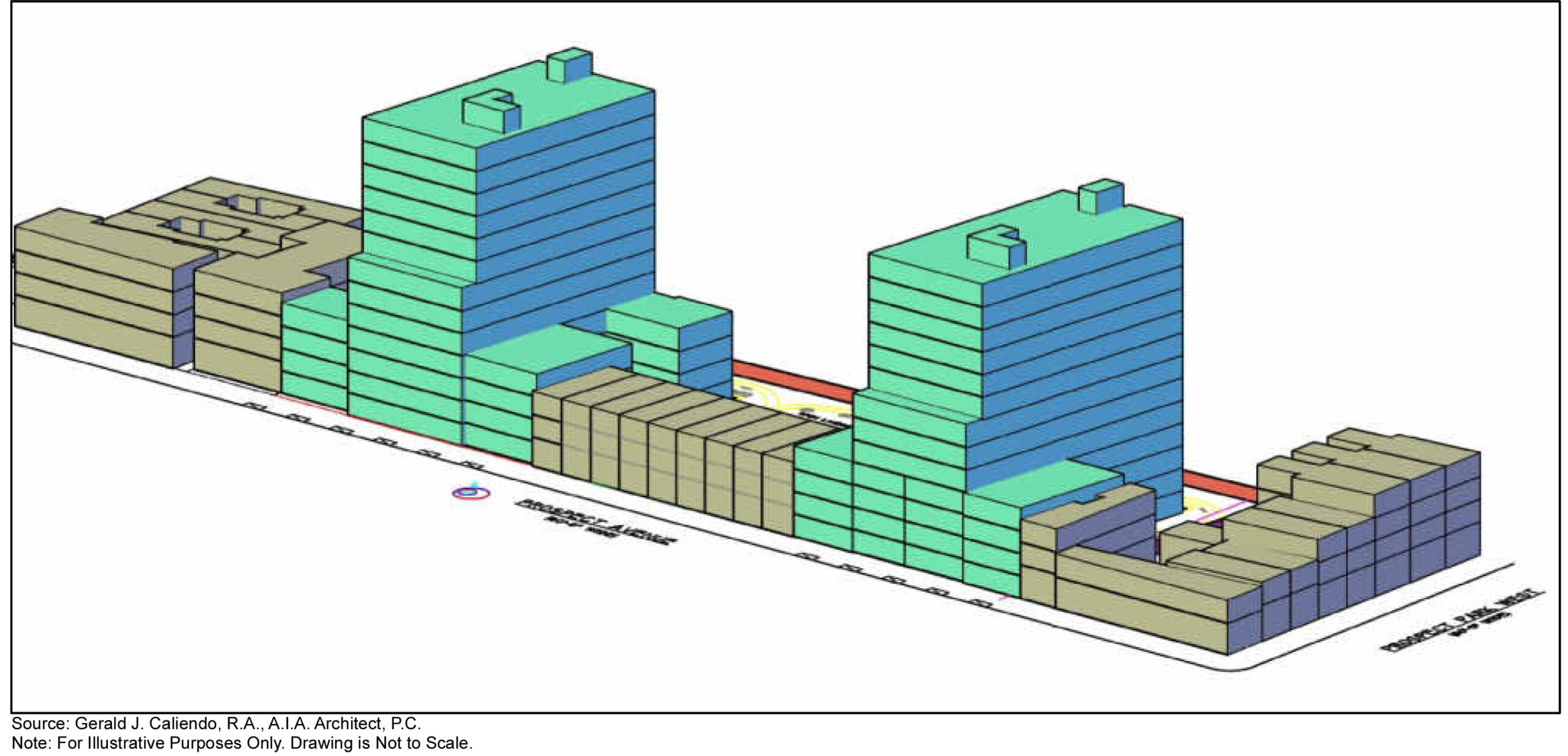
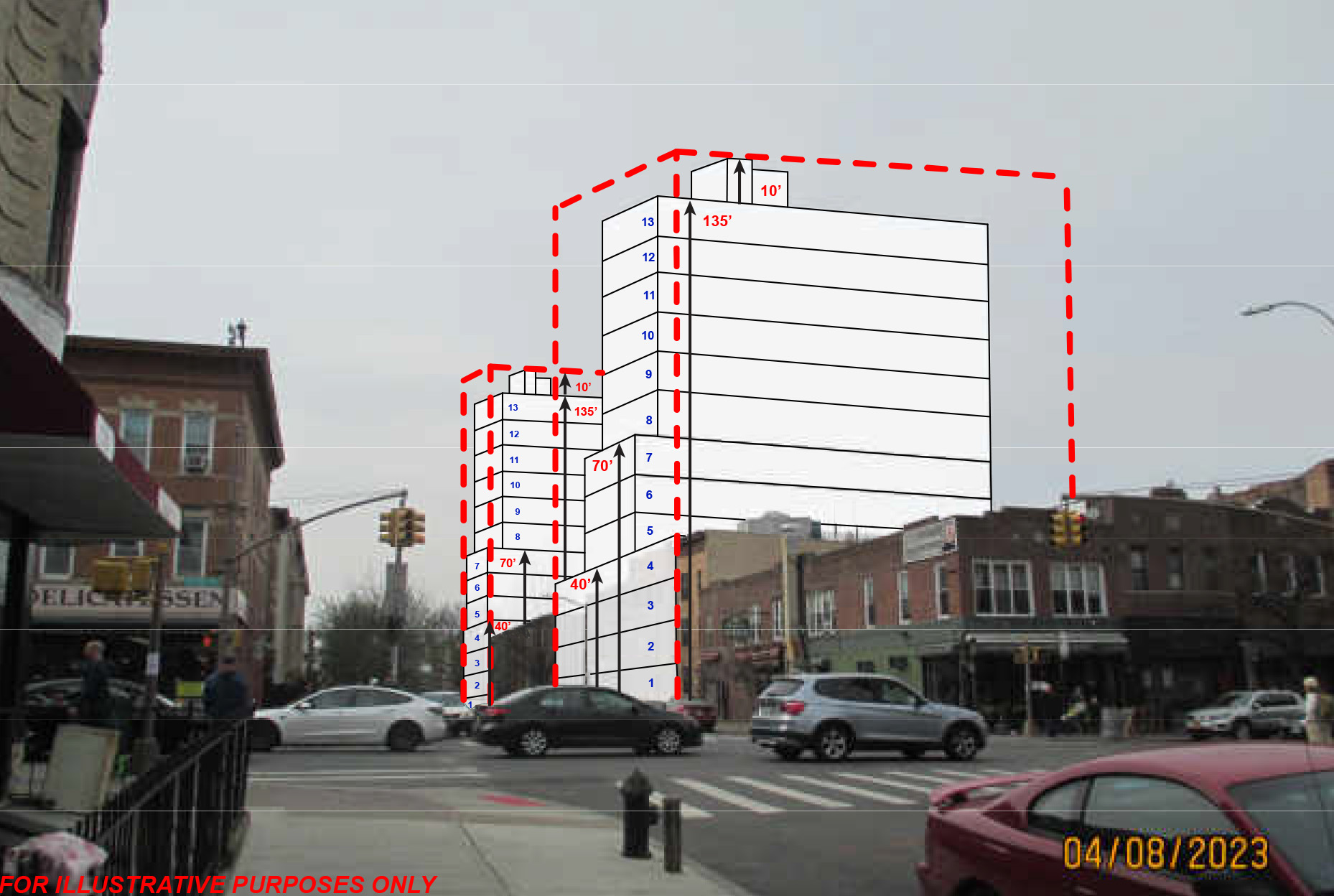
Of those who spoke against the rezoning application, most said it is too big for the surrounding area (and risks being much bigger with City of Yes expansions), too expensive, and doesn’t adequately factor in infrastructure and environmental concerns. Most said they support the smaller, 100 percent affordable development.
Julia Melzer said the community has been “wholly shut out” of any engagement on the proposal, which she said would “forever mar our urban landscape” and is being pushed “to greedily line the pockets” of Arrow Linen.
“I deeply value the importance of inclusive planning that enables vibrant and livable communities and I, like almost everyone in this room, think this is a prime site for more housing, but it needs to reflect the community. This application, however, has been dishonest, behind closed doors,” she said.
She added the community could not meaningfully review the application without an articulated proposal of what would be built under the City of Yes, and said meanwhile “environmental issues are underestimated or ignored,” with the current proposal not slated to go through environmental review because it does not meet the city’s new threshold.

Melissa Olson, who said she rents on Prospect Avenue with family, said she has “searched and searched for a larger rental in this area. I’ve come to realize we don’t have a crisis of availability in Brooklyn, there are plenty of units we can see, what we have is a crisis of affordability.”
Olson said nearby rezonings, including on 4th Avenue, had increased housing prices in the area and are like playing a “game of monopoly.”
“I would love for 100 percent affordable units to go in one block away from me that maybe my family could live in,” she said, adding her family makes 60 to 80 percent AMI. “I don’t want to live in a high-rise, but I do want to live somewhere where I can afford.”
She added that the city’s job is not to ensure Arrow Linen makes maximum profit from its site, but to “ensure all communities provide affordable housing in a fair way, without ruining those same neighborhoods for existing residents in the process.”
Adriana DiNardo, who has lived in the area since 1978, said she also backs the 100 percent affordable development, saying the city needs more rent-stabilized apartments, not market-rate units. She said the real crisis is affordability, not supply. That is demonstrated by the fact the city has continued to have high rates of development over the last few years while at the same time population has decreased and homelessness has soared, she said.
Jay Golderberg said the rezoning would be a “huge blow to affordability” and to the people who live and work in the community today, especially the renters in the 59 units of rent-stabilized housing that the rezoning encompasses. “Speculators and developers will buy every building in the neighborhood, and it’s clear that the city will let them build whatever they ask for,” he said.
He said the Catholic Charities option is exactly what the community needs, and provides more units than what Arrow Linen has proposed, and they would all be affordable. If the rezoning is approved as requested, the affordable option would be off the table because of the dramatic increase in land value, he said.
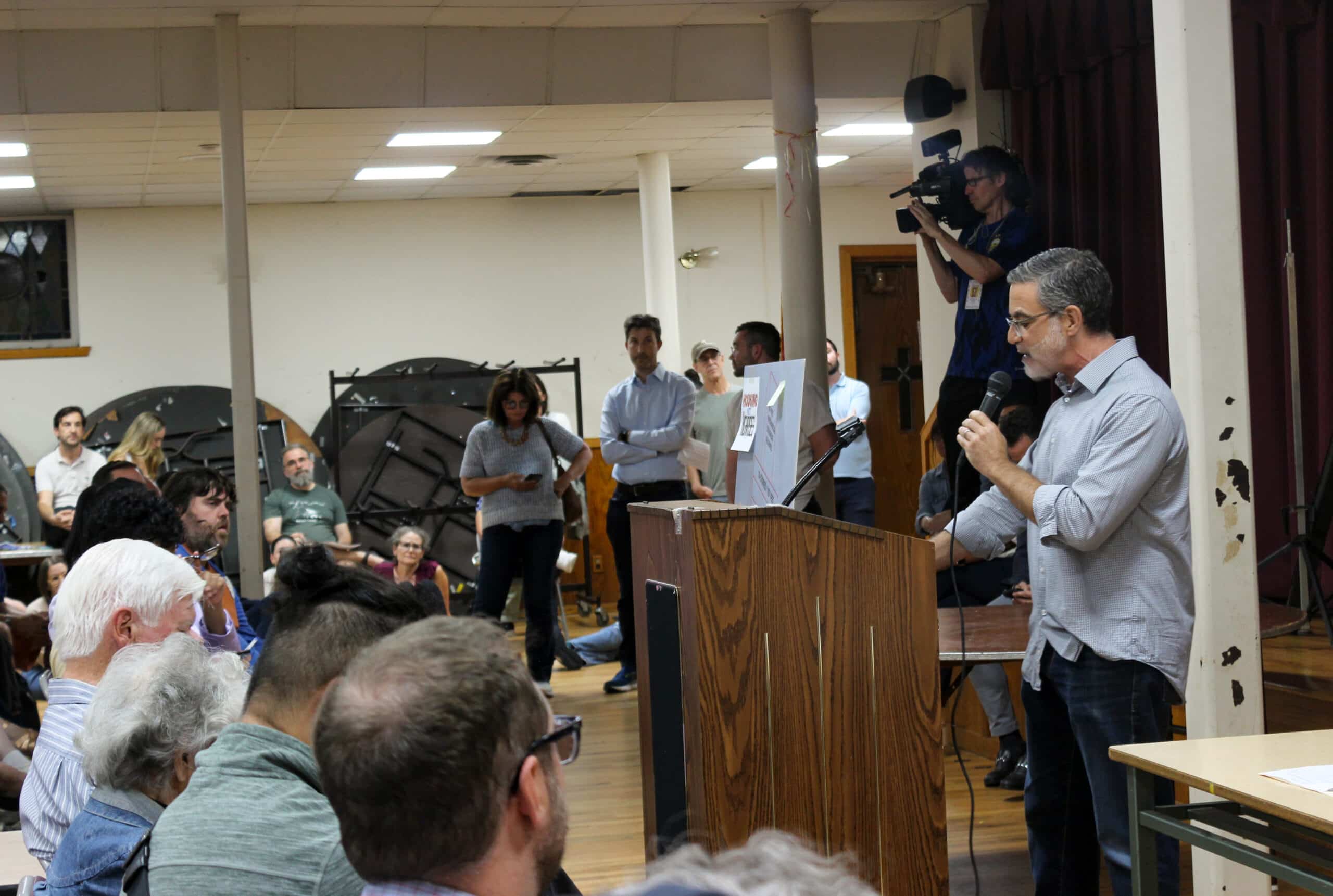
Luz Torres, who has lived in Brooklyn for 70 years and owns and lives in one of the houses on Prospect Avenue that would be included in the rezoned area, said the proposal is being pushed through under the guise of providing affordable housing, which she said isn’t accurate. “I resent it.” She said she rents the units in her house to long-term tenants at affordable rates.
“I want the record to know that I do not want my land rezoned by this private applicant for a rezoning I do not support in my community,” she stated.
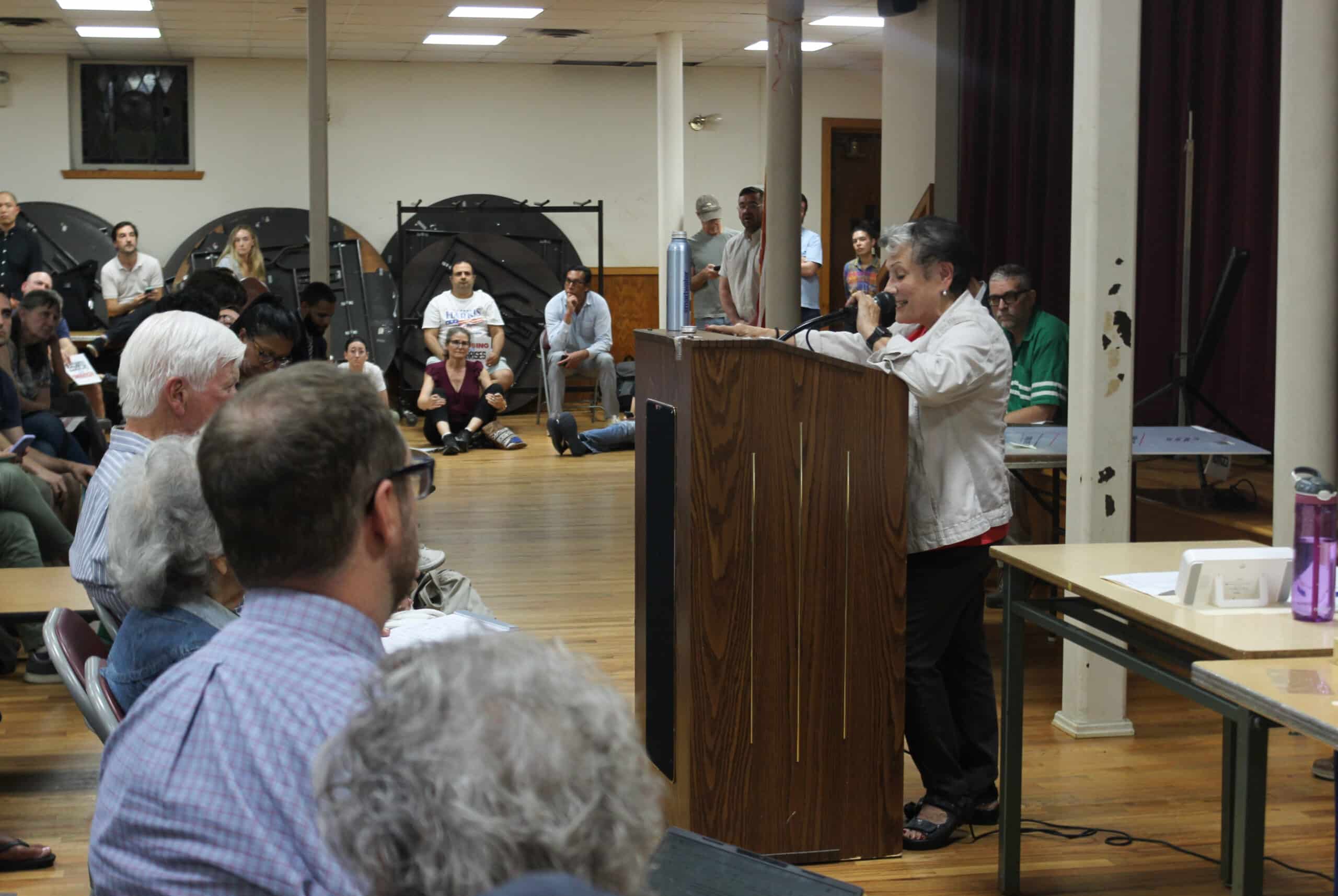
In a break from discussing the proposal at hand, speaker Eric Olson used his testimony to interrogate Open New York, which has supported the proposed rezoning. He called the group a “libertarian think tank and propaganda outlet for real estate” whose origins started with a wealthy real estate investor and funding from Facebook.
He said its goals “seem to be attacking community members who have legitimate concerns about unregulated development in their neighborhoods, calling them racist NIMBYS and tricking everyday people into becoming lobbyists for the real estate industry.”
He urged DCP and Hanif to “instead consider the alternative that would bring 100 percent affordable human-scale housing to the city, something that the people who live here actually want.”
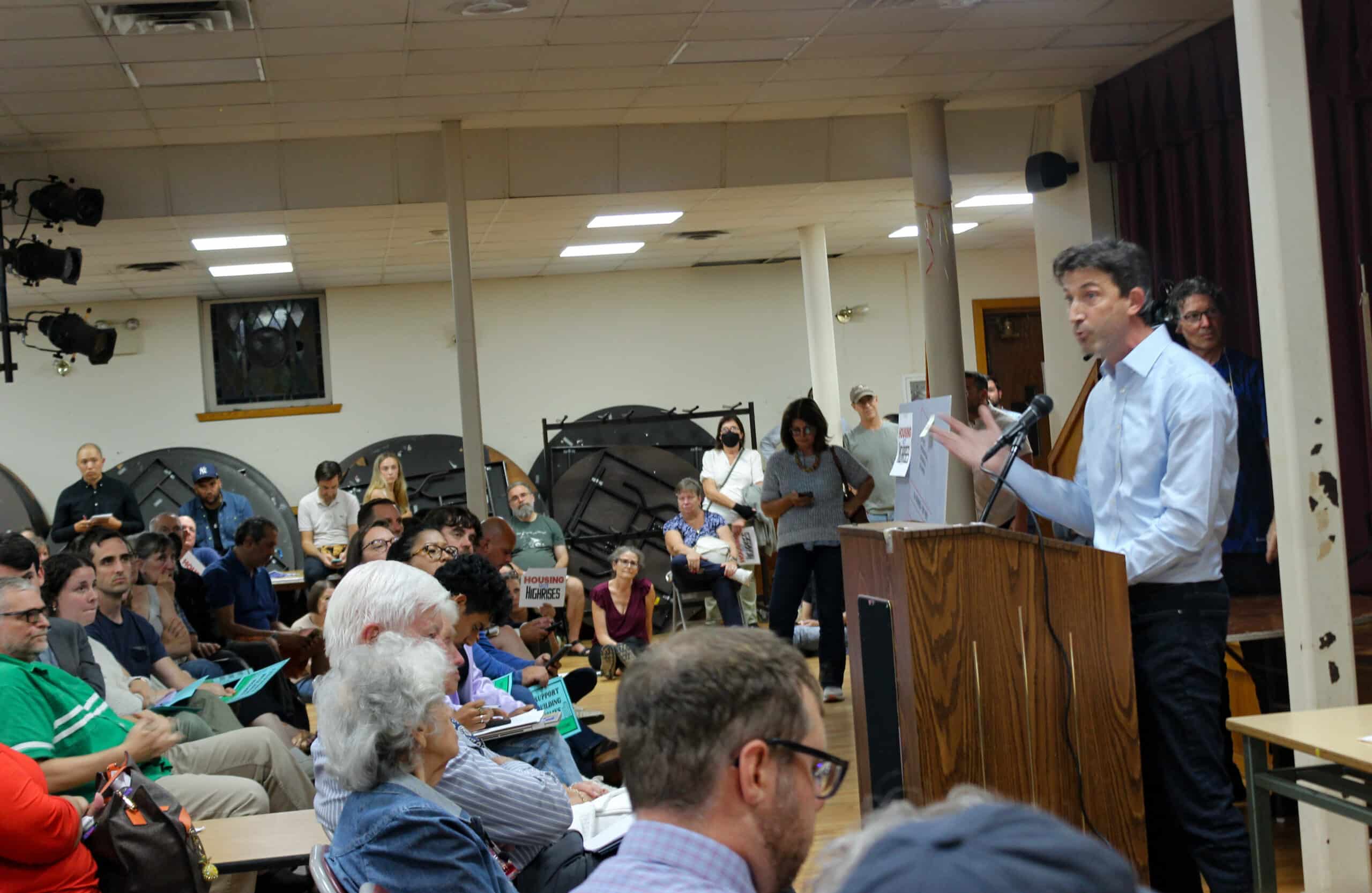
But not all local residents were in agreement.
David Ehrenberg, who said he grew up near the Arrow Linen site and continues to live in the area, said all the local residents, especially children, “benefit from the extraordinarily public and publicly funded assets that this neighborhood hosts.”
“There is simply, in my view, no credible argument that this neighborhood cannot accept more residents,” he said. “Concerns about this project gentrifying the neighborhood ignore the fact that this neighborhood, at least for the 48 years that I’ve lived here, has been going through unrelenting gentrification with effectively zero new construction in this part of the neighborhood.”
He added that while the 100 percent affordable development sounds like a good proposal, the city had limited affordable housing subsidies to get it built.
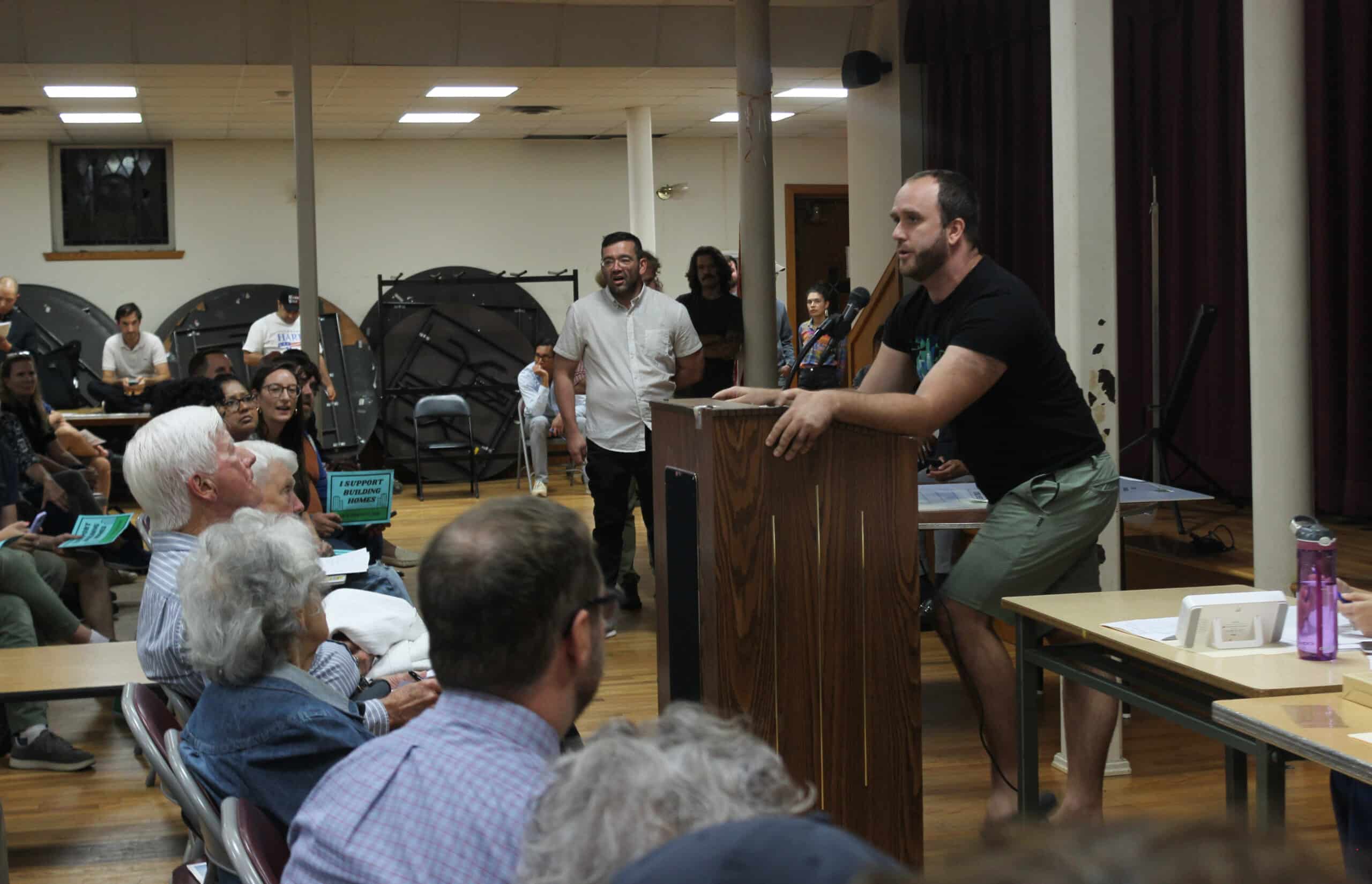
Michelle de la Uz, of the Fifth Avenue Committee, seconded that, saying there is a backlog in public funding for four to five years, and she supports the rezoning as is because Mandatory Inclusionary Housing will provide affordable apartments without needing public money.
Rachel Fee agreed that while the 100 percent affordable option “would be great,” it isn’t what is being proposed and “there is no such deal being entertained by this site owner.”
“Affordable housing projects that are 100 percent affordable use the city’s limited capital subsidies, which are normally invested in low income communities where market rents aren’t high enough to cross subsidize affordable rents. That’s not this neighborhood where average rents are over $4,500 a month,” she said.
She said if communities kept opposing housing development the affordability crisis would continue to get worse. “I’m sick of my family and friends being priced out of this neighborhood.”
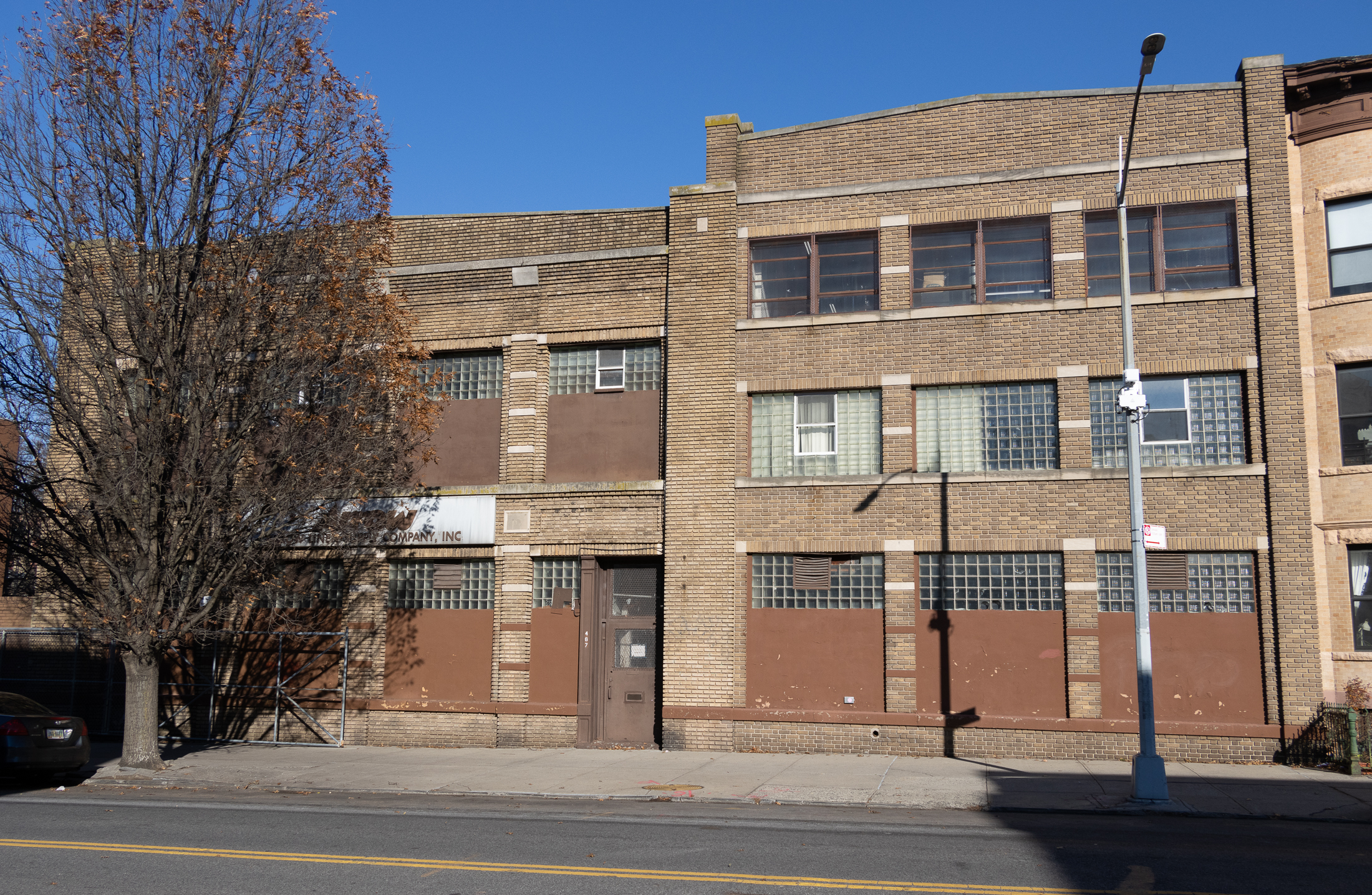

Jessica Yager said she also had a background in affordable housing development in NYC, and said “the truth is that there is no world in which there will be 100 percent affordable building on this site.”
“The amount of subsidies that it would require simply isn’t feasible or realistic, so don’t let that fantasy undermine the very good reality-based option that’s on the table. Our community needs affordable housing, and with this proposal, we get it. Our community also desperately needs housing at all price points,” she said.

Editor of transport-focused publication Streetsblog Gersh Kuntzman also testified in support of the proposed rezoning, saying in meetings he had covered “you always hear of a white knight developer who could do a project of 100 percent affordability at a lower density” but he said if there is a plan in place, the community would be debating it.
“This neighborhood has an affordability crisis. I’m living proof of it, because in a couple of months, you’ll see me living somewhere in Bushwick or in Sunset Park or somewhere else. I’m not looking for your sympathy, I’m just here to say in my remaining minute that I urge the board to vote yes on this project,” he said.
Courtney Adrian, who said she is a renter raising her family in the area, took a more direct tone, saying there is an age and wealth gap in the room between those for and against the proposal and said, “I think you people made it up out of thin air,” regarding the 100 percent affordable proposal.
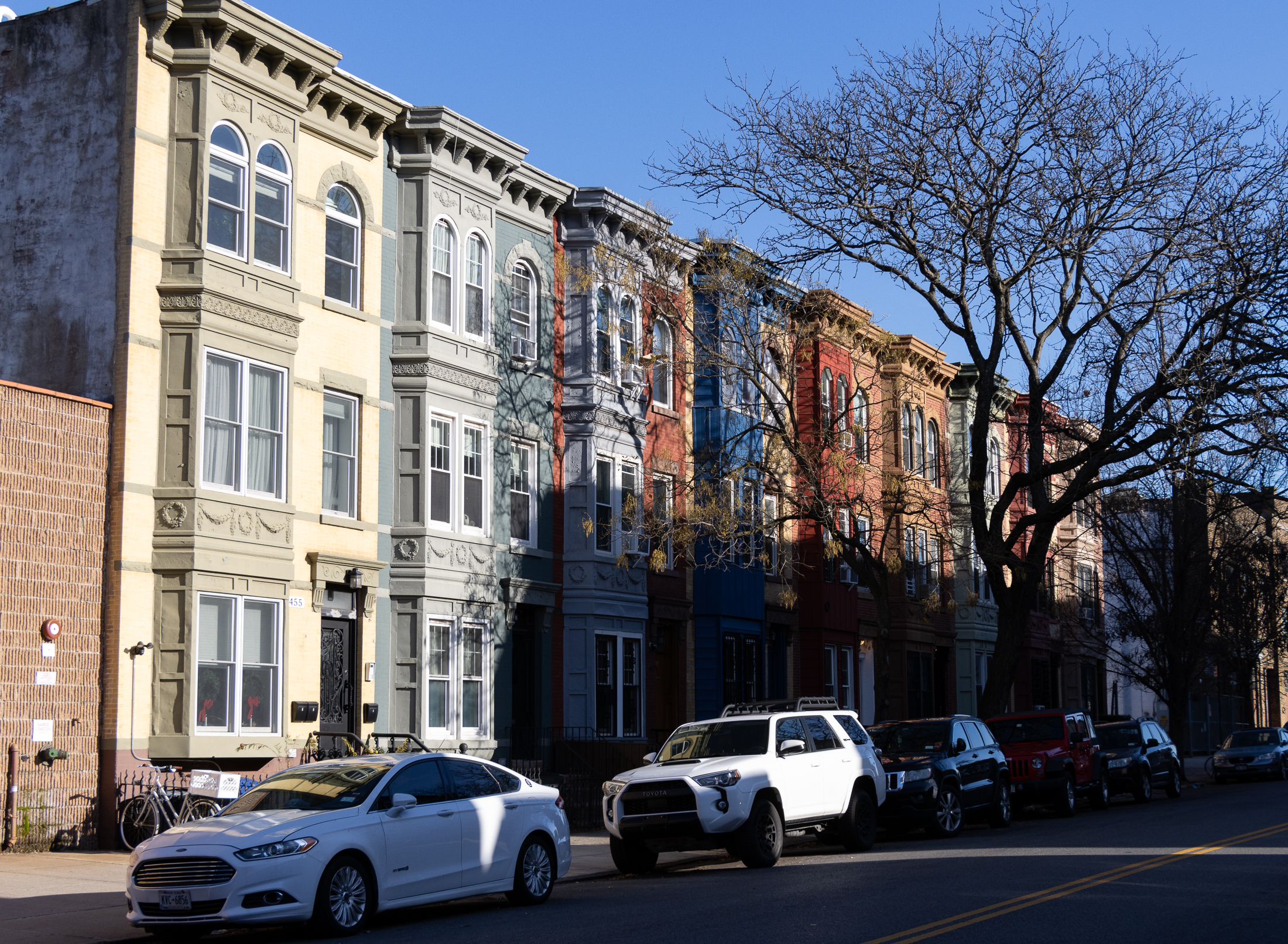
Drew Edwards similarly said he is raising his family in the neighborhood and said it isn’t affordable to do so. “That’s a fact. We have amazing schools…but schools across District 15 are under enrolled.”
He said when he thinks about neighborhood character, he thinks about “people bringing their children to school, walking down the street and seeing my friends and their kids, and playing together in the park.”
“I want new neighbors to come. I want my daughter to have new friends that come to this neighborhood, and in order for that to happen, you have to build the homes for people to live in,” he said. “You shouldn’t have to wait for something to die in order to move to the neighborhood.”
Community Board 7 will meet again on Thursday night to hear another round of testimony in a public hearing that will be held on Zoom. After the public hearings, the board will eventually vote on the proposal, which will then head to the Borough President’s desk, the City Planning Commission, and then to the City Council for a decision.
[Photos by Anna Bradley-Smith unless noted otherwise]
Related Stories
- Locals Call on Pol to Reduce Arrow Linen Rezoning, Back Fully Affordable Build
- Windsor Terrace Locals Want a Shorter, More Affordable Arrow Linen Project
- ‘Housing Not High Rises:’ Group Opposing 13-Story Arrow Linen Project Says Local Context Missing
Email tips@brownstoner.com with further comments, questions or tips. Follow Brownstoner on Twitter and Instagram, and like us on Facebook.

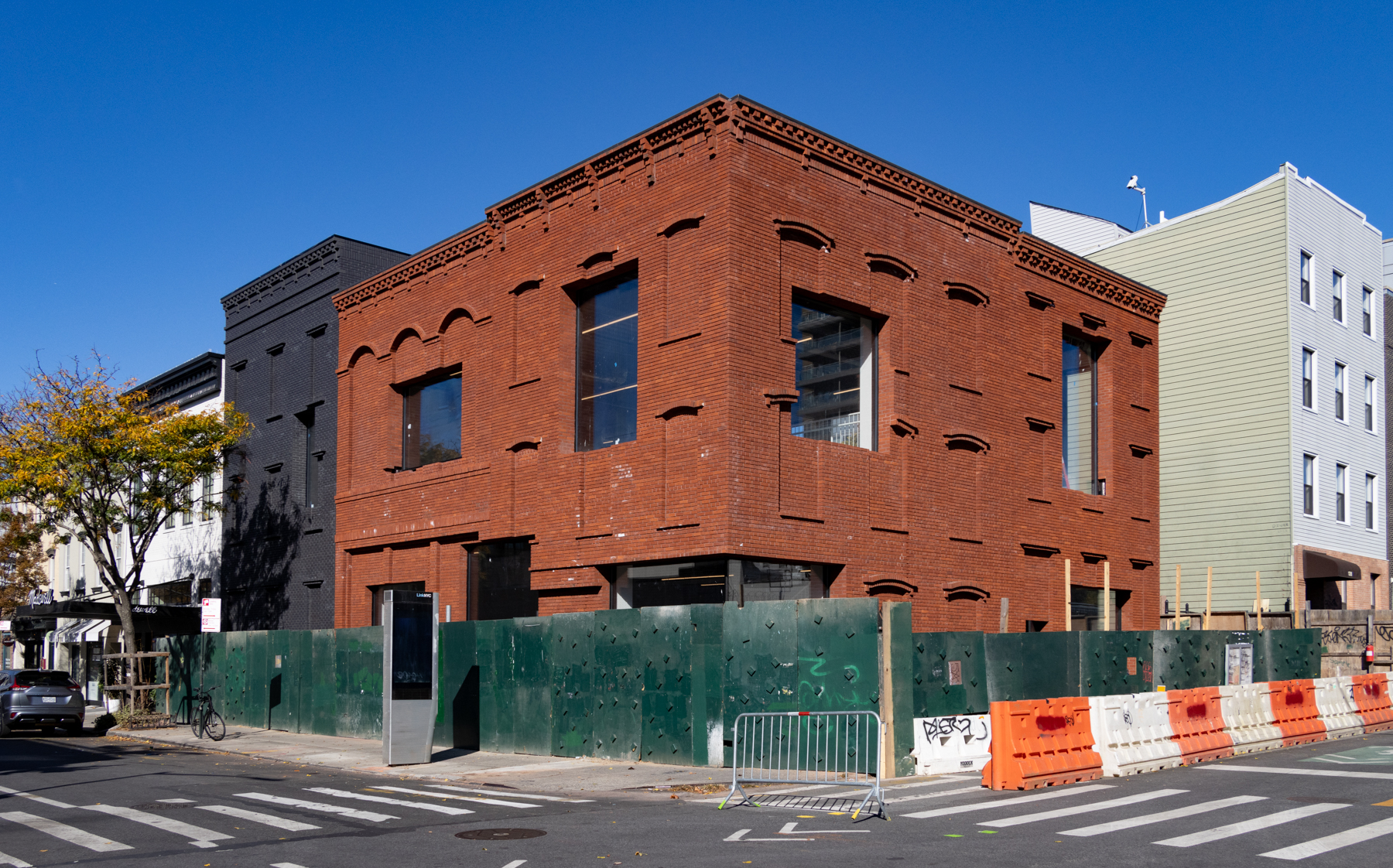

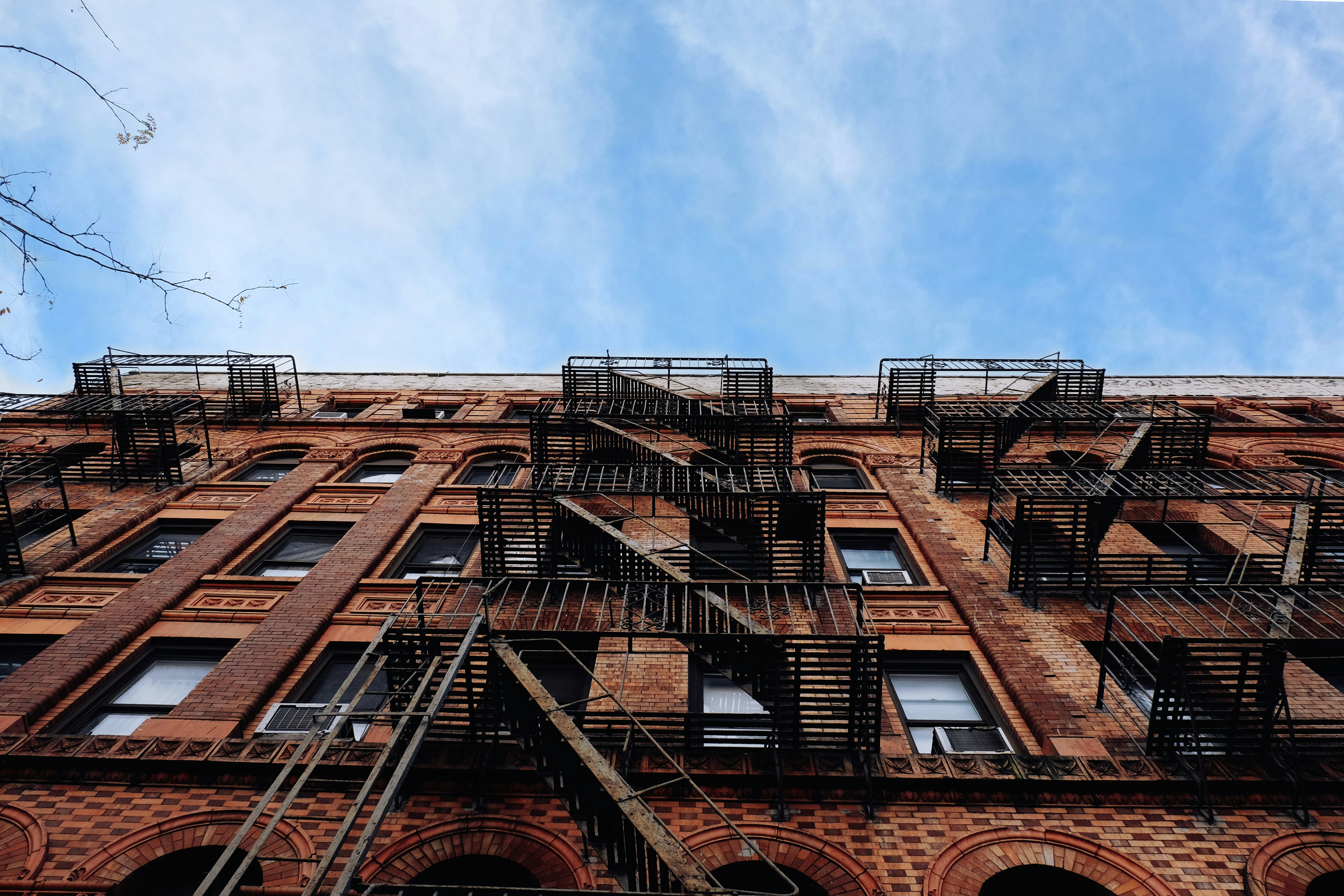
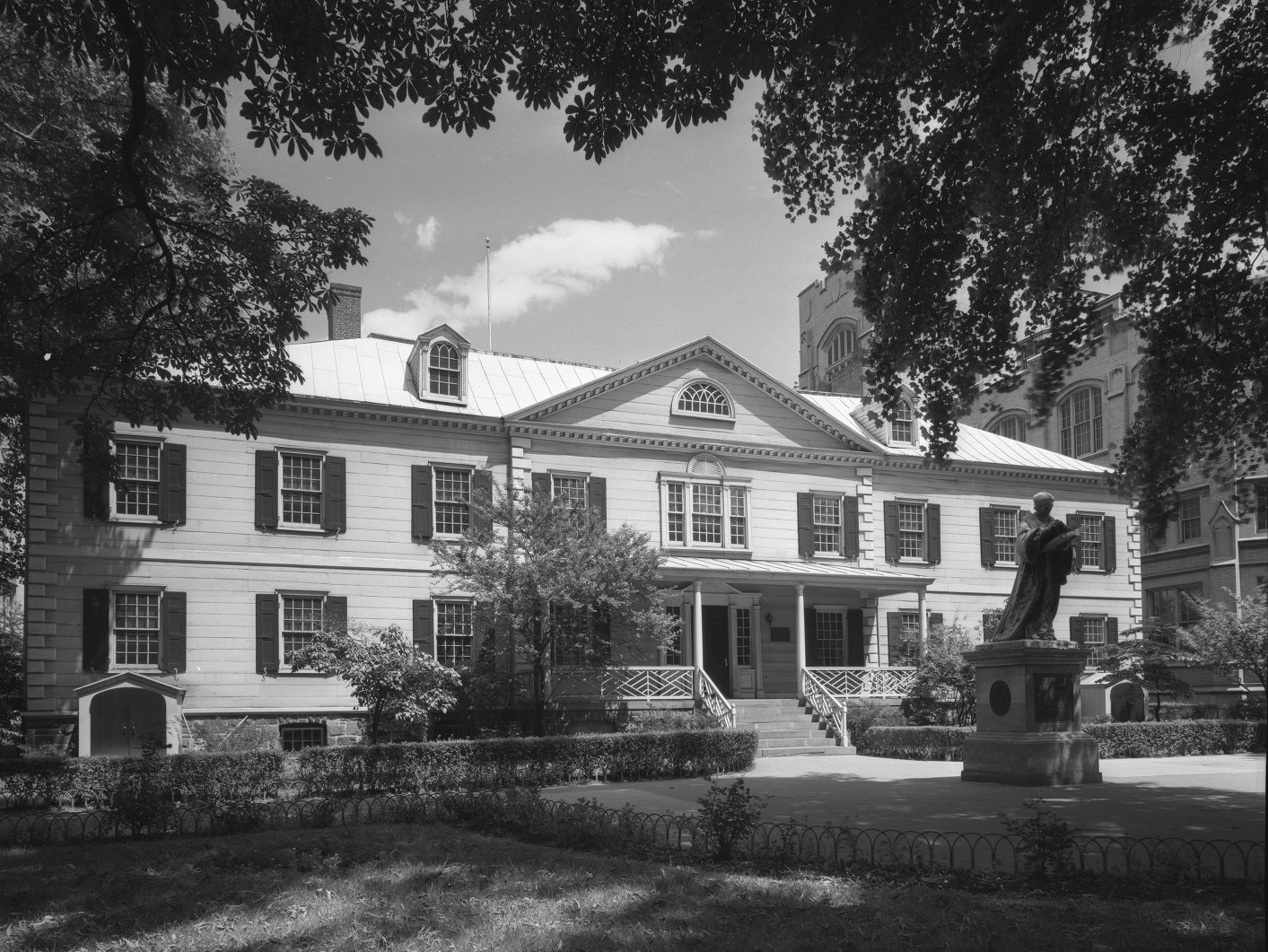
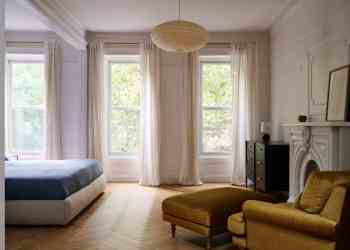



I live in a row house in Brooklyn. Across the street is an apartment building taller than the surrounding houses. And you know what? It’s fine. No problems. These people are crazy.